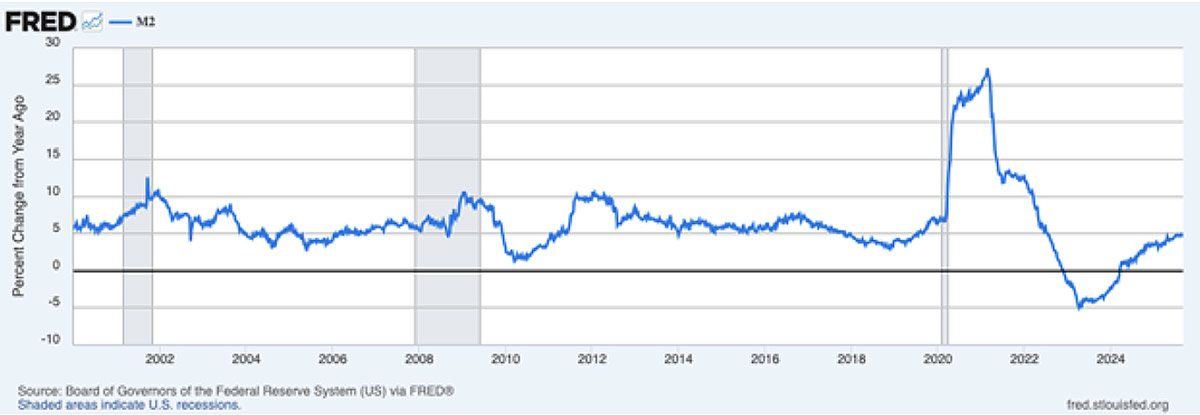Barring a sharp correction in the next few trading sessions, U.S. stocks are likely heading into the fourth quarter near all-time highs. I’ve made the case previously that steady, although fairly modest, economic growth paired with resilient earnings has supported prices to date. With the Federal Reserve poised to ease monetary policy as the economy expands, there is not a great case for being outright bearish.1
But that does not mean risks are low. Below, I outline four that I think investors should be keenly watching in the next quarter and beyond.
Risk #1: A Second Wave of Inflation
Among institutional investors, recession fears dominated earlier this year, particularly following the “Liberation Day” announcement. Today, it’s inflation that is again the top concern. August CPI data underscored this concern, with inflation coming in hotter-than-expected. The risk here is that the Fed will again have to reverse course, just as the market is baking in expectations for several rate cuts.
Prices for some goods may rise, especially where tariffs hit. But without the monetary backdrop to sustain a broad-based surge, the specter of runaway inflation looks overstated, in my view. Broad money supply growth in the U.S. remains tame (see M2 money supply chart below), though the trend line will be worth watching closely in the months ahead.

Source: Federal Reserve Bank of St. Louis 2
Risk #2: Concern Over Federal Reserve Independence and U.S. Dollar Weakness
Fed policy is always political to some degree, given that appointments come from the White House and confirmations from the Senate. Removing Fed governors because of a disagreement over policy would be a major concern, but the Supreme Court already reaffirmed this year that such an act would be illegal. Public criticism of rate policy may seem threatening, but it’s also nothing new, and there is little evidence it has swayed decision-making from the Federal Open Markets Committee.
As for the dollar, “de-dollarization” chatter resurfaces regularly, with Russia, China, or the BRICS bloc often floated as challengers. Yet data show the dollar still comprises more than half of global currency reserves, and it is involved in nearly 90% of all foreign exchange transactions. No other currency matches the U.S. dollar’s liquidity, stability, and global reach. Over time, the dollar’s share may fluctuate, but fears of sudden debasement or collapse look misplaced.
Risk #3: Over-Concentration
Tech remains the market’s favorite sector, with AI-related companies driving much of 2025’s gains. In my view, this enthusiasm reflects strong fundamentals. Q3 2025 Tech earnings are expected to rise over 12% year-over-year on similarly strong revenue growth.
But with enthusiasm comes concentration. When too much capital chases the same trade, markets become vulnerable to abrupt reversals if sentiment shifts. For now, earnings support remains solid, but this is a reminder of the importance of diversification. Overcrowding isn’t a reason to avoid strong companies, but it does raise the odds of volatility if momentum cools.
Risk #4: Rising Long-Term Bond Yields
The summer saw 30-year yields in the U.S., U.K., France, and Germany climb to multi-year highs, sparking a wave of debt-crisis headlines. In Britain, rising gilt yields were pinned on budget concerns. In France, an offhand remark about an IMF bailout got blown out of proportion. In the U.S., some tied higher yields to worries about refunding tariffs should courts strike them down.
But a closer look reveals that rising long yields is a global issue. Italy, Spain, Canada, and Australia all saw long-term yields rise in tandem. In my view, and as I’ve written before, this trend is less about country-specific fiscal woes and more about sentiment flowing through interconnected global bond markets. Historically, modest increases in long rates alongside central bank rate cuts steepen yield curves, which is a setup that can support lending and growth.
Bottom Line for Investors
It’s a mixed bag right now for investors. Many are growing more bullish as 2025 closes, but worries also remain. Inflation, Fed independence, dollar stability, crowded trades, and rising yields all top the list. But it’s also true that these risks are widely known and widely discussed, which in my view reduces their power to derail the bull market.
For long-term investors, the persistence of these worries ultimately creates a constructive backdrop. Earnings continue to hold up, the Fed has begun easing, and the economy is chugging along despite headwinds. Volatility may flare if one of these worries dominates headlines again, or if the risk comes to fruition in a worse way than expected. That’s why I’m urging investors to stay focused on them.
1 TrustNet. September 16, 2025. https://advisor.zacksim.com/e/376582/ite-record-overvaluation-fears/5tmj31/1326236343/h/GiShj21LxhtbTDGNKyNnyarlFm8_dLP4EUXm8RxlG2U
2 Fred Economic Data. September 23, 2025. https://advisor.zacksim.com/e/376582/series-WM2NS-/5tmj34/1326236343/h/GiShj21LxhtbTDGNKyNnyarlFm8_dLP4EUXm8RxlG2U
DISCLOSURE
Past performance is no guarantee of future results. Inherent in any investment is the potential for loss.
Zacks Investment Management, Inc. is a wholly-owned subsidiary of Zacks Investment Research. Zacks Investment Management is an independent Registered Investment Advisory firm and acts as an investment manager for individuals and institutions. Zacks Investment Research is a provider of earnings data and other financial data to institutions and to individuals.
This material is being provided for informational purposes only and nothing herein constitutes investment, legal, accounting or tax advice, or a recommendation to buy, sell or hold a security. Do not act or rely upon the information and advice given in this publication without seeking the services of competent and professional legal, tax, or accounting counsel. Publication and distribution of this article is not intended to create, and the information contained herein does not constitute, an attorney-client relationship. No recommendation or advice is being given as to whether any investment or strategy is suitable for a particular investor. It should not be assumed that any investments in securities, companies, sectors or markets identified and described were or will be profitable. All information is current as of the date of herein and is subject to change without notice. Any views or opinions expressed may not reflect those of the firm as a whole.
Any projections, targets, or estimates in this report are forward looking statements and are based on the firm’s research, analysis, and assumptions. Due to rapidly changing market conditions and the complexity of investment decisions, supplemental information and other sources may be required to make informed investment decisions based on your individual investment objectives and suitability specifications. All expressions of opinions are subject to change without notice. Clients should seek financial advice regarding the appropriateness of investing in any security or investment strategy discussed in this presentation.
Certain economic and market information contained herein has been obtained from published sources prepared by other parties. Zacks Investment Management does not assume any responsibility for the accuracy or completeness of such information. Further, no third party has assumed responsibility for independently verifying the information contained herein and accordingly no such persons make any representations with respect to the accuracy, completeness or reasonableness of the information provided herein. Unless otherwise indicated, market analysis and conclusions are based upon opinions or assumptions that Zacks Investment Management considers to be reasonable. Any investment inherently involves a high degree of risk, beyond any specific risks discussed herein.
The S&P 500 Index is a well-known, unmanaged index of the prices of 500 large-company common stocks, mainly blue-chip stocks, selected by Standard & Poor’s. The S&P 500 Index assumes reinvestment of dividends but does not reflect advisory fees. The volatility of the benchmark may be materially different from the individual performance obtained by a specific investor. An investor cannot invest directly in an index.
The Russell 1000 Growth Index is a well-known, unmanaged index of the prices of 1000 large-company growth common stocks selected by Russell. The Russell 1000 Growth Index assumes reinvestment of dividends but does not reflect advisory fees. An investor cannot invest directly in an index. The volatility of the benchmark may be materially different from the individual performance obtained by a specific investor.
Nasdaq Composite Index is the market capitalization-weighted index of over 3,300 common equities listed on the Nasdaq stock exchange. The types of securities in the index include American depositary receipts, common stocks, real estate investment trusts (REITs) and tracking stocks, as well as limited partnership interests. The index includes all Nasdaq-listed stocks that are not derivatives, preferred shares, funds, exchange-traded funds (ETFs) or debenture securities. An investor cannot invest directly in an index. The volatility of the benchmark may be materially different from the individual performance obtained by a specific investor.
The Dow Jones Industrial Average measures the daily stock market movements of 30 U.S. publicly-traded companies listed on the NASDAQ or the New York Stock Exchange (NYSE). The 30 publicly-owned companies are considered leaders in the United States economy. An investor cannot directly invest in an index. The volatility of the benchmark may be materially different from the individual performance obtained by a specific investor.
The Bloomberg Global Aggregate Index is a flagship measure of global investment grade debt from twenty-four local currency markets. This multi-currency benchmark includes treasury, government-related, corporate and securitized fixed-rate bonds from both developed and emerging markets issuers. An investor cannot invest directly in an index. The volatility of the benchmark may be materially different from the individual performance obtained by a specific investor.
The ICE Exchange-Listed Fixed & Adjustable Rate Preferred Securities Index is a modified market capitalization weighted index composed of preferred stock and securities that are functionally equivalent to preferred stock including, but not limited to, depositary preferred securities, perpetual subordinated debt and certain securities issued by banks and other financial institutions that are eligible for capital treatment with respect to such instruments akin to that received for issuance of straight preferred stock. An investor cannot invest directly in an index. The volatility of the benchmark may be materially different from the individual performance obtained by a specific investor.
The MSCI ACWI ex U.S. Index captures large and mid-cap representation across 22 of 23 Developed Markets (DM) countries (excluding the United States) and 24 Emerging Markets (EM) countries. The index covers approximately 85% of the global equity opportunity set outside the U.S. An investor cannot invest directly in an index. The volatility of the benchmark may be materially different from the individual performance obtained by a specific investor.
The Russell 2000 Index is a well-known, unmanaged index of the prices of 2000 small-cap company common stocks, selected by Russell. The Russell 2000 Index assumes reinvestment of dividends but does not reflect advisory fees. An investor cannot invest directly in an index. The volatility of the benchmark may be materially different from the individual performance obtained by a specific investor.
The S&P Mid Cap 400 provides investors with a benchmark for mid-sized companies. The index, which is distinct from the large-cap S&P 500, is designed to measure the performance of 400 mid-sized companies, reflecting the distinctive risk and return characteristics of this market segment.
The S&P 500 Pure Value index is a style-concentrated index designed to track the performance of stocks that exhibit the strongest value characteristics by using a style-attractiveness-weighting scheme. An investor cannot directly invest in an index. The volatility of the benchmark may be materially different from the individual performance obtained by a specific investor.



